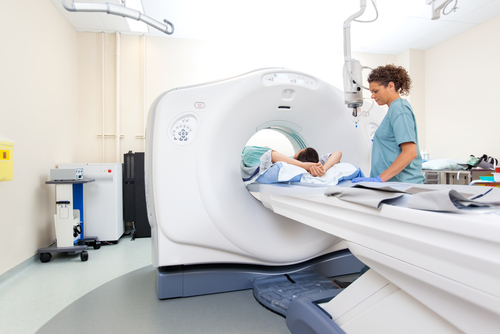The Dangers of Athletic Clothing and MRIs

Thanks to magnetic resonance imaging, doctors can easily visualize abnormalities affecting the internal organs, soft tissue, and other structures of the body without the need for invasive exploratory surgery. Although MRIs are painless and safe, the powerful magnetic forces and radio frequency energy of the machine can cause metal objects, such as jewelry or implants, to overheat, malfunction, or become displaced. If you have ever had an MRI, you know that questions about pacemakers and other implants and removing jewelry are a standard part of the procedure. Doctors are now warning patients that they should also avoid certain types of clothing.
Manufacturers of exercise gear, such as Lululemon and Columbia Sportswear, have started incorporating small metallic threads into their athleisure clothing as a way to keep the garments from stinking as the wearer sweats. These fibers, which are often invisible to the eye, inhibit the growth of odor-causing bacteria. Unfortunately, they can also heat up as they react with the MRI machine leading to light to moderate burns.
The first incident of a person being burned in this manner is believed to have occurred in 2012. An 11-year-old girl, who was sedated during the procedure, received second-degree burns when her undershirt reacted to the machine. In this particular case, the label on the shirt did not advise of the presence of silver fibers, and the fibers were not detected by a wand metal detector prior to the procedure. Another case occurred in 2014 when a woman had to press the emergency stop button after her yoga pants started to heat up during an MRI. Fortunately, the woman was not sedated, so she was able to alert the radiologist in time to avoid serious injury. Because of these and similar incidents, a number of hospitals are implementing policies requiring patients wearing yoga and other athletic gear to change into paper or cotton gowns before undergoing an MRI.
How to Stay Safe:
One way to tell if your activewear contains metallic fibers is to check the label or to research the product information online. As a general rule, any clothing labeled as antimicrobial, antibacterial, or as having “silver technology” should be avoided when undergoing an MRI. Of course, each clothing line has its own terminology for its fabrics and technology, so it can be difficult for consumers to determine exactly what is in their T-shirt or yoga pants. The best rule of thumb is to opt for the hospital gown if you are not 100 percent sure that your clothing is free of metallic fibers. Some other lesser-known items that can react with an MRI include tattoos that have pigments containing iron oxide and nicotine patches that can trap water against the skin and cause a burn.


